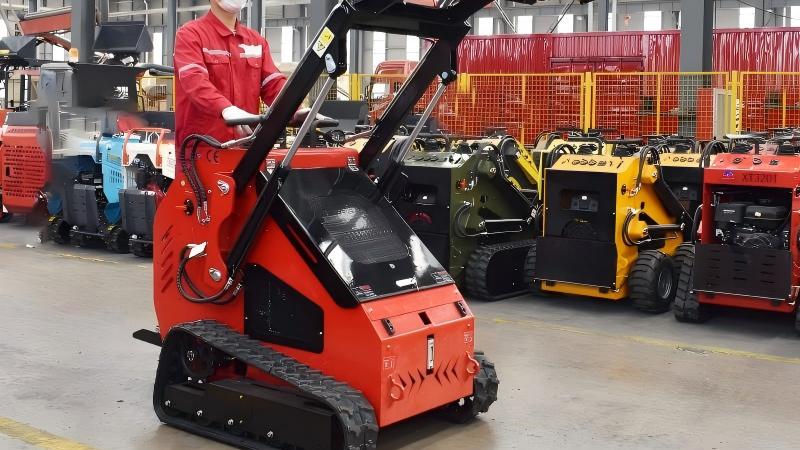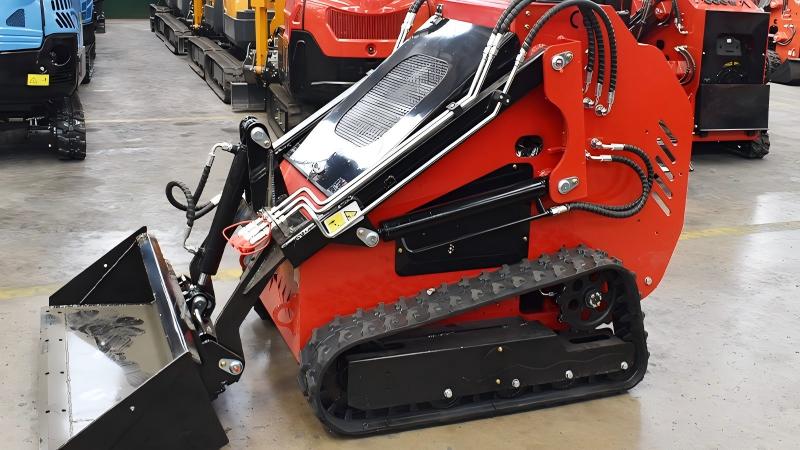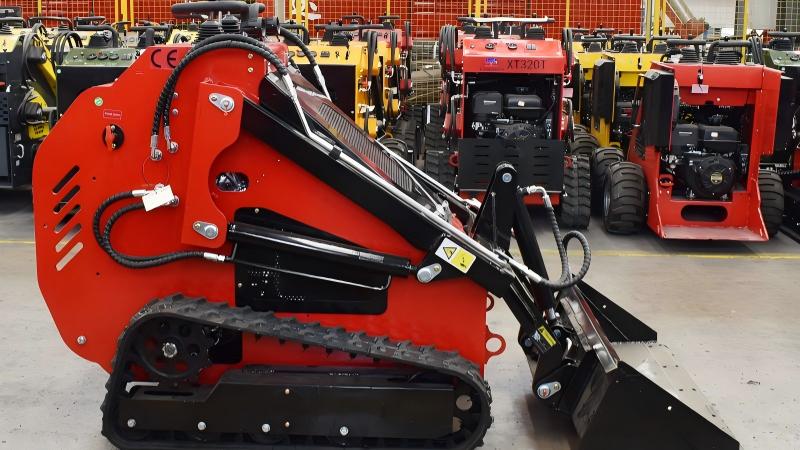The fundamental distinction between vertical lift and radial lift skid steer loaders lies in the geometry of their arm movement and the resulting path the attachment takes during the lifting cycle. A radial lift skid steer, the traditional and historically more common design, operates with a lift arm that pivots from a single point at the rear of the machine, much like a human forearm. This pivot action causes the attachment, such as a bucket, to follow a pronounced arcing or curved path throughout its entire range of motion. As the arms raise, the attachment moves both upwards and significantly backwards towards the machine's cab. Conversely, a vertical lift skid steer is engineered with a more complex linkage system, often referred to as a "parallel" or "vertical" lift path. This sophisticated mechanism ensures that during the final, crucial stage of the lift, the attachment raises almost perfectly straight up, maintaining a much more consistent forward position relative to the machine's chassis. This key difference in mechanical philosophy dictates nearly every aspect of the machine's performance, from its maximum reach at height to its stability under heavy loads, making the choice between the two a critical decision based on the specific tasks at hand.
The operational implications of these two lift paths become starkly apparent when evaluating performance metrics like maximum dump reach and operating height. For a radial lift machine, the arcing path means that the attachment reaches its furthest forward position typically at mid-height. As it continues to rise past this point, it retracts closer to the machine. This can be a limitation when trying to dump material over a high wall or into a tall container, as the load pulls back and away from the target. A vertical lift skid steer, by contrast, maintains a far more consistent forward reach throughout the entire lift cycle, especially in the upper half of its range. This allows the operator to position the load precisely over the target at maximum height, a decisive advantage in tasks like loading trucks with high-sided beds, backfilling trenches, or placing pallets onto high shelves. The vertical lift path provides superior "reach-at-height," enabling the machine to work effectively in confined spaces where it cannot drive right up to the dumping point, thereby enhancing productivity and reducing cycle times on complex material handling jobs.
Another critical area of differentiation is the lift capacity profile, commonly illustrated on a machine's rated operating capacity (ROC) chart. A radial lift skid steer typically exhibits its peak lifting power and stability at or around the mid-height range, coinciding with the point where the attachment is closest to the machine, creating a favorable leverage scenario. However, this capacity can diminish noticeably at the full height of its lift, precisely when the load is retracted and the machine's stability is challenged. In contrast, a vertical lift model is specifically designed to maintain a higher percentage of its rated operating capacity at maximum lift height. The vertical path keeps the load in a more stable position over the machine's load center, distributing the weight more effectively and allowing for safer and more powerful lifting operations when the arms are fully extended. This makes vertical lift machines the undisputed champion for applications that frequently require lifting heavy loads to their maximum potential, such as stacking heavy building materials like bricks or blocks, handling large bales in agricultural settings, or any high-lift loading task where consistent power at the top of the arc is non-negotiable.
Ultimately, the choice between a vertical lift and a radial lift skid steer is not about one being universally superior, but about selecting the right tool for the predominant application. Radial lift skid steers often come at a lower initial purchase price and are exceptionally well-suited for general-purpose tasks that do not demand extreme height or reach. They excel at digging, grading, and loading from a pile directly in front of the machine, where their simpler design and strong mid-height performance are fully utilized. Industries like landscaping and agriculture, where loading from a pile into a low-sided truck is common, find great value in radial lift models. Vertical lift skid steers, commanding a premium price, are the specialized tool for high-demand, high-precision applications. They are the go-to choice for construction sites, demolition projects, and industrial material handling where loading tall vehicles, reaching over obstacles, and maintaining lift power at height are daily requirements. Understanding this core distinction empowers buyers to make an informed investment that aligns with their operational needs, maximizing efficiency and return on investment.
Post time:Nov.25.2025



